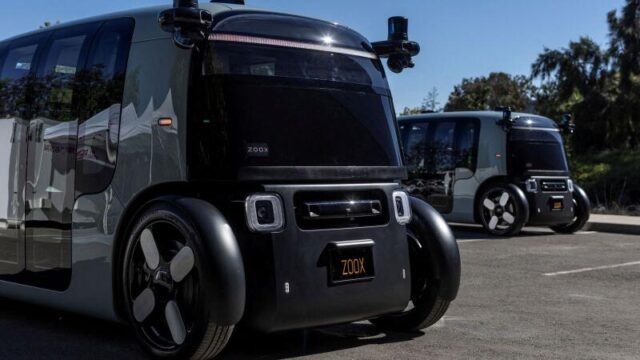Amazon.com Inc’s self-driving vehicle unit, Zoox, said on Monday it has successfully tested a robotaxi with employees as passengers on a public road in a move to bring it closer to commercial service for the general public.
SAN FRANCISCO – Amazon subsidiary Zoox has claimed a major breakthrough for the robotaxi industry after its self-driving vehicles, which have no steering wheels or other manual controls, took to California public roads over the weekend.
Use of the boxy electric vehicles is to be limited to full time employees who will be able to use the service only to travel the short distance between two Zoox headquarters buildings about a mile (1.6km) apart in Foster City, near San Francisco, during regular office hours, the company said in a blog post.
“This is an amazing milestone for Zoox and the autonomous vehicle industry as a whole,” said chief executive Aicha Evans.
The service was tested during the weekend and will be made available to Zoox employees beginning in the next few months, according to the company.
“Getting to be the world’s first passenger in a robotaxi with no manual controls on open public road…was one of the highlights of my life,” Zoox co-founder and chief technology officer Jesse Levinson said in the post. “I can’t wait for everyone to experience that magic.”
Zoox robotaxis have no steering wheels or pedals for human drivers. The company says the employee shuttle service will help refine its technology.
Other companies, such as Alphabet subsidiary Waymo and General Motors subsidiary Cruise, have been testing robotaxi services in limited areas but vehicles are still built with controls to allow a human drivers to take control as a precaution.
“Putting the vehicle on (an) open public road and validating our approach to all of the different requirements, including regulatory, is a big step and we would not have done it unless internally we were already looking at the line of sight for going commercial,” Chief Executive Aicha Evans told reporters on a conference call.
Evans declined to provide a timeline for the commercial launch, which will need additional government clearances.
The industry’s automated vehicle segment has not rolled out as fast as originally expected as the technology has proven tough to master. Ford and Volkswagen last year announced they would shutter their Argo AI self-driving unit and focus on driver-assistance technology that provided more immediate returns.
Companies still pursuing development of this technology include GM’s Cruise unit and Alphabet’s Waymo.
AFP & Reuters








